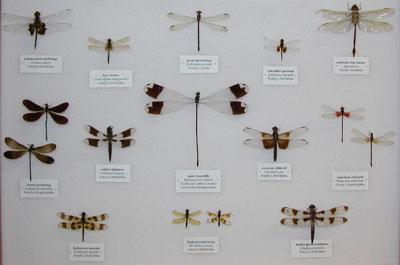November 6, 2023
Odonata Species: An Ancient Order of Insects

Introduction
- The Odonata order of insects, encompassing three distinct groups – Anisoptera (dragonflies), Zygoptera (damselflies), and the relict group Anisozygoptera represented by only two living species, stands as one of the oldest insect orders. This diverse group boasts over 6,000 identified species, showcasing a remarkable global distribution. From the tropics, where they flourish in abundance and diversity, to the boreal forests of Siberia and North America, Odonata are found in a wide array of habitats. This article delves into the key features, distribution, and habitats of these intriguing insects.
Distribution
- Odonata are truly cosmopolitan, spanning from the tropics, where they are most populous and diverse, to the boreal forests of Siberia and North America. They also inhabit various regions of the Southern Hemisphere, with the exception of Antarctica. Notably, India stands out as a particularly diverse habitat, hosting more than 500 known species of Odonata.
Habitat
- These fascinating insects are found in an assortment of habitats, predominantly freshwater environments such as ponds, rivers, and lakes. Significantly, they are closely associated with bodies of water during their larval stage, underscoring their reliance on aquatic ecosystems for their life cycle.
Distinctive Features
- Odonata possess several distinctive characteristics that set them apart from other insect groups. These include minute antennae, exceptionally large eyes that dominate most of the head, two pairs of transparent membranous wings adorned with intricate veining, a long and slender abdomen, and a notable aquatic larval stage known as the nymph. One striking feature is that the abdomen is almost always longer than any of the wings. Moreover, these insects allocate over 80% of their brain capacity to processing visual information. They are predominantly diurnal, exhibiting vibrant and striking colors as they flutter near bodies of water. Their mouthparts have evolved for efficient biting, rendering them highly adept hunters. This predatory nature extends to both the adult and aquatic larval stages.
Key Facts about Mudumalai Tiger Reserve
Introduction
- The Mudumalai Tiger Reserve, nestled in the Nilgiris District of Tamil Nadu, spans an expansive 321 sq. km. This reserve occupies a unique position at the convergence of three states – Karnataka, Kerala, and Tamil Nadu. It graces the Northeastern and Northwestern slopes of the Nilgiri Hills, an integral part of the Western Ghats. As a vital component of the Nilgiris Biosphere Reserve, it holds the distinction of being India’s inaugural Biosphere Reserve. This article provides insights into its location, terrain, diverse habitats, and rich biodiversity.
Location and Boundary
- Situated strategically, the Mudumalai Tiger Reserve shares its borders with the Wayanad Wildlife Sanctuary in Kerala to the West, the Bandipur Tiger Reserve in Karnataka to the North, the Nilgiris North Division to the South and East, and the Gudalur Forest Division to the South West. The name “Mudumalai” translates to “the ancient hill range,” a testament to its venerable existence dating back 65 million years to the formation of the Western Ghats.
Terrain
- The terrain of Mudumalai is characterized by undulating landscapes, with elevations ranging from 960m to 1266m. This diverse topography lends itself to a rich variety of habitats, creating a haven for a multitude of wildlife species.
Habitats and Flora
- Mudumalai Tiger Reserve boasts a tapestry of habitats, ranging from tropical evergreen forest, moist deciduous forest, and moist teak forest to dry teak forest, secondary grasslands, and swamps. Notable flora includes the towering “Elephant Grass,” giant bamboo varieties, and prized timber species like Teak and Rosewood. Additionally, the reserve is a sanctuary for wild relatives of cultivated plants, such as wild rice, ginger, turmeric, and cinnamon.
Rich Fauna
- The reserve is home to a diverse array of fauna, featuring iconic species like the Tiger, Elephant, Indian Gaur, Panther, and a host of deer species including the Spotted Deer, Barking Deer, and Mouse Deer. Additionally, the habitat supports creatures such as the Common Langur, Malabar Giant Squirrel, Mongoose, and Hyena, creating a thriving ecosystem within its boundaries. Notably, the acclaimed Oscar-winning documentary ‘Elephant Whisperers’ was filmed within the confines of the Theppakadu Elephant Camp, a testament to the reserve’s significance in wildlife conservation.
Conclusion
- The Mudumalai Tiger Reserve stands as a testament to the rich biodiversity and ecological importance of the Nilgiris region. Its diverse habitats, unique flora, and charismatic fauna make it a jewel in the crown of India’s protected areas. The reserve’s pivotal role in wildlife conservation and the recent cinematic recognition only serve to underscore its significance on the global stage.
Daily Gist : The Hindu/Indian Express : 30 Jan 2025
January 30, 2025
Gist of editorial : the Hindu/ Indian Express/20 Jan 2025
January 20, 2025
Daily the Hindu/ Indian Express Editorial Gist: 14 Jan 2025
January 14, 2025
